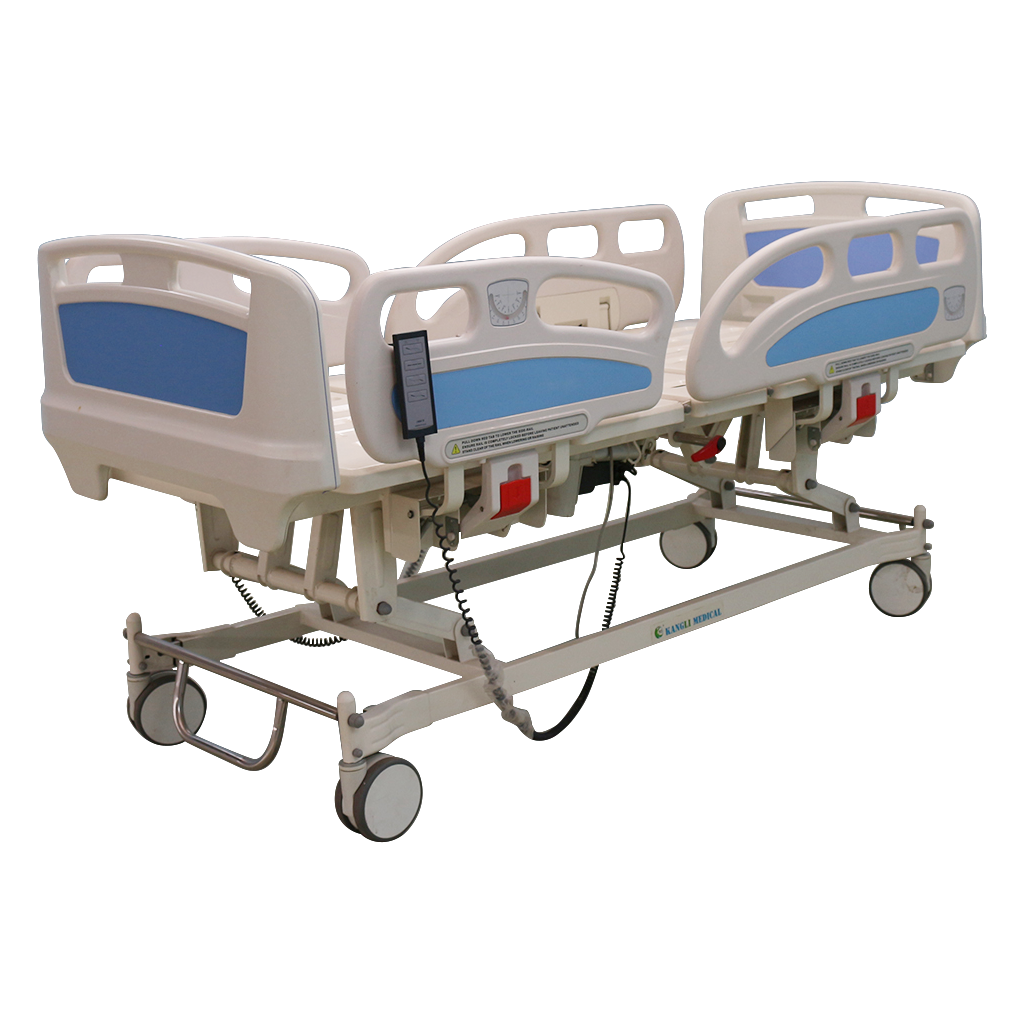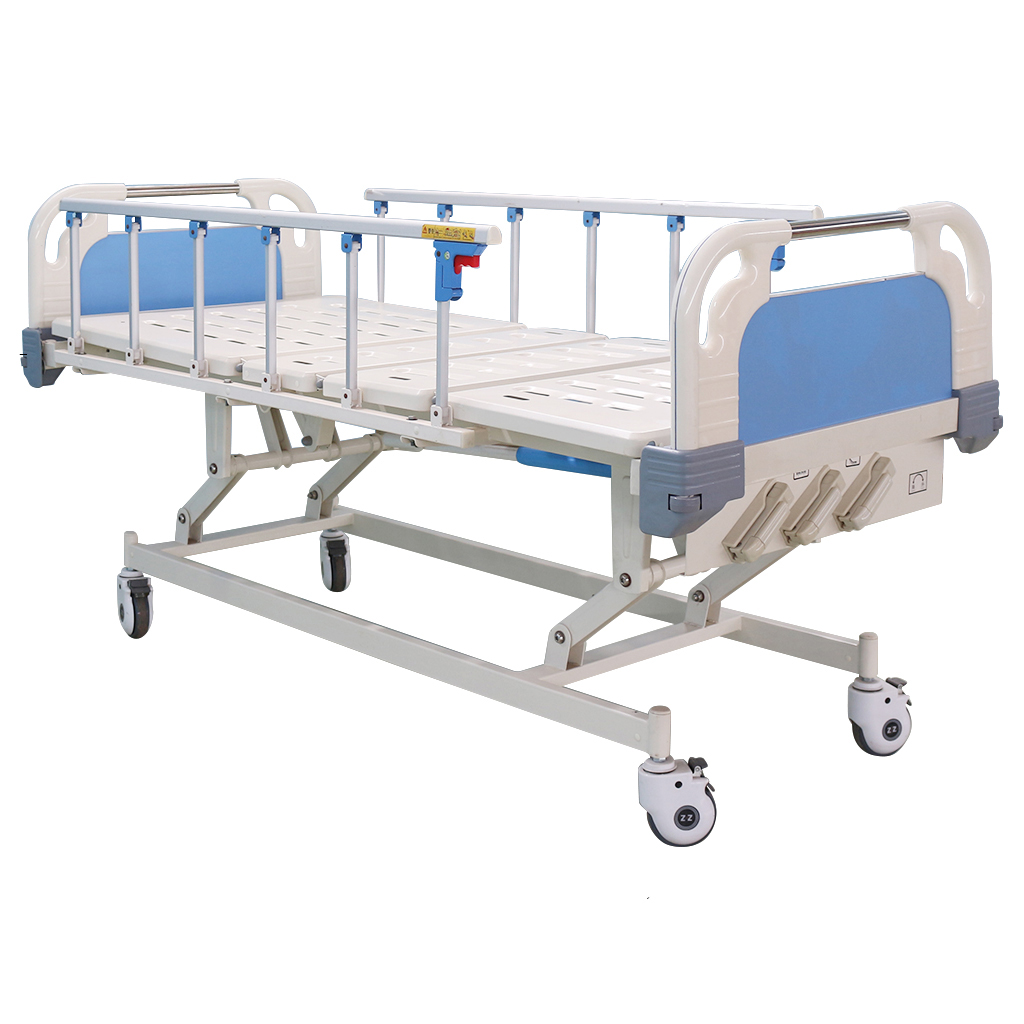I. Introduction
Hospital beds are essential pieces of medical equipment that play a crucial role in patient care, comfort, and safety. They come in various types and sizes to cater to the diverse needs of adults, children, and infants. This blog post aims to explore the different types and sizes of hospital beds, providing hospital professionals, bed tenders, manufacturers, and distributors with valuable insights to make informed decisions.
Choosing the right hospital bed is vital for ensuring patient comfort and safety. The wrong bed can lead to discomfort, increased risk of falls, and even medical complications. Therefore, understanding the different types and sizes of hospital beds is essential for creating a safe and comfortable hospital environment.
II. Hospital Bed Types
A. Electric ICU Bed
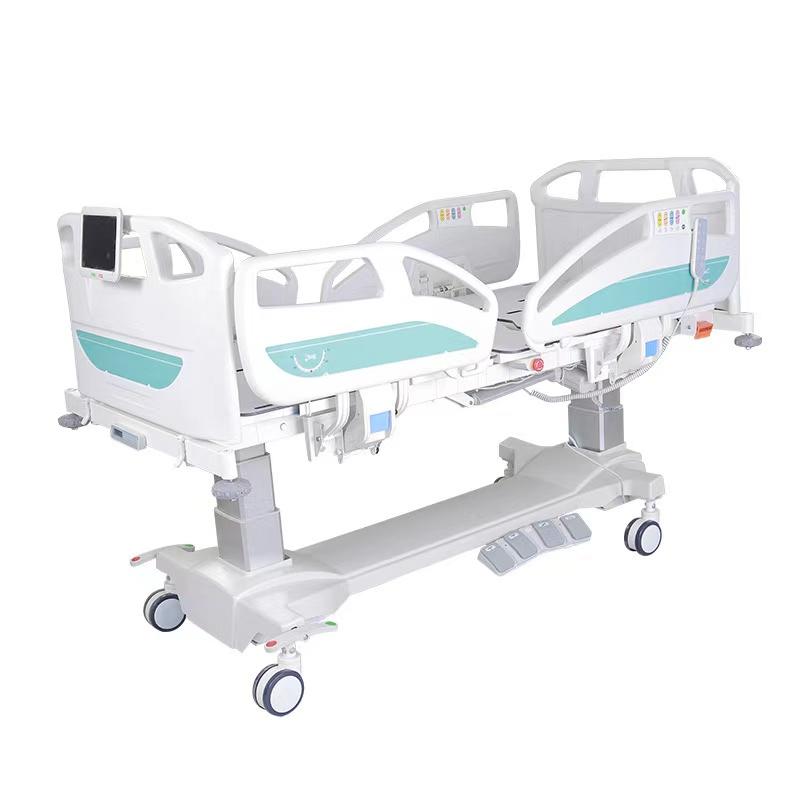
The Electric ICU Bed is designed for intensive care nursing in hospital wards. It features flexible adjustments in bed position, providing essential Trendelenburg and reverse Trendelenburg, as well as cardiac chair positions. Premium features include digital weight recording for patient body weight, side tilt left and right, and one-key one-touch X-ray fluoroscopy position options.
- Dimensions: Height 18 to 30 inches, Length 84.6 inches, Width approximately 38.6 inches
- Suitable for: Adults, critically ill patients
B. Standard Height Hospital Bed
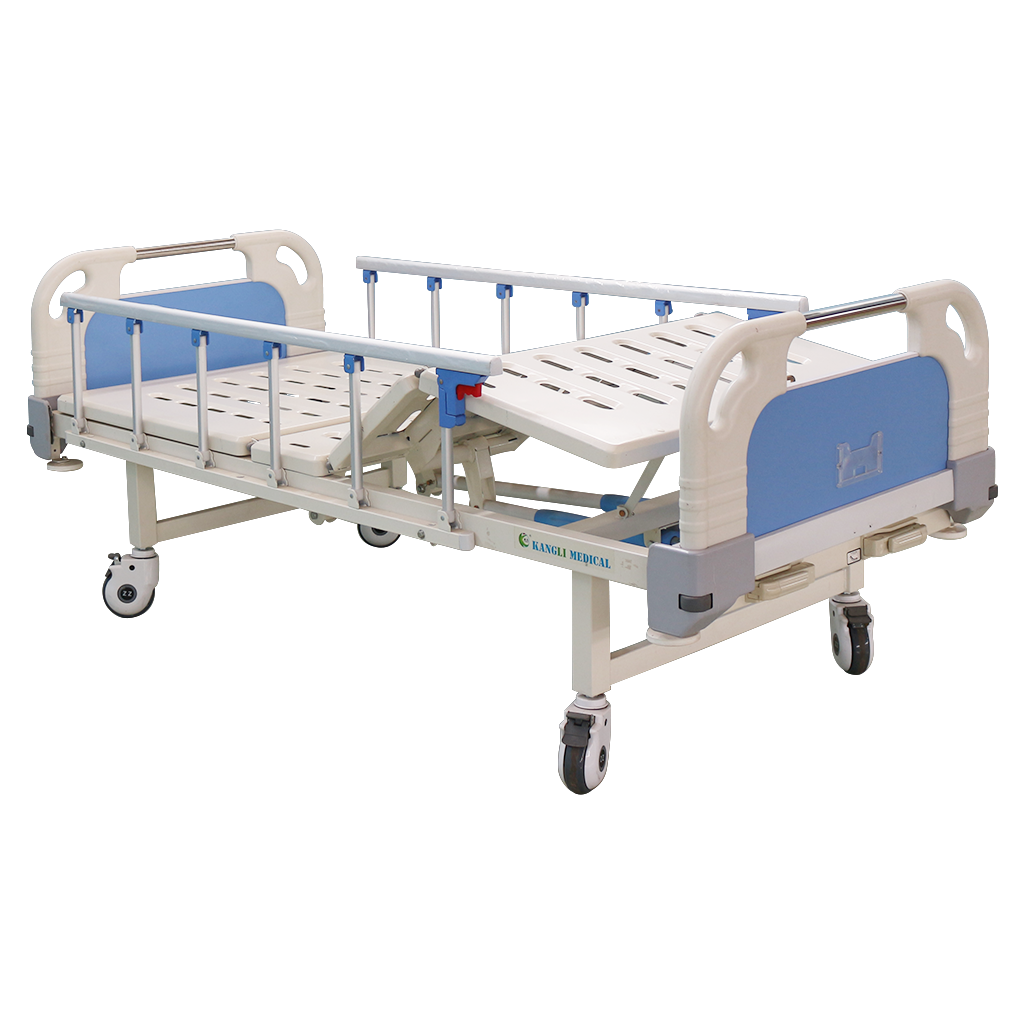
The Standard Height Hospital Bed is the most commonly used bed in hospitals and healthcare centers. While the height is fixed, an advanced fixed height hospital bed provides two manual cranks to control the bed backrest and knee up and down, enabling patients to enjoy dinner, reading, or even work.
Bed Dimensions:
- Length: 84.6 inches (2150 mm)
- Width: Approximately 38.6 inches (980 mm)
- Height: Approximately 19.7 inches (500 cm) from the supporting framework to the floor ground.
Suitable for: Adults, general hospital use
C. Adjustable Height Hospital Bed
The Adjustable Height Bed includes manual crank, semi-electric, and full-electric systems. The height is adjustable via wire-hand control, nurse station button, or manual rocking operation. For example, a three-crank manual hospital bed achieves the height up and down function via the middle crank.
- Dimensions: Length 84.6 inches, Width approximately 38.6 inches,Adjustable height commonly 18 to 30 inches
- Suitable for: Adults, patients requiring frequent position changes
D. Child Hospital Bed
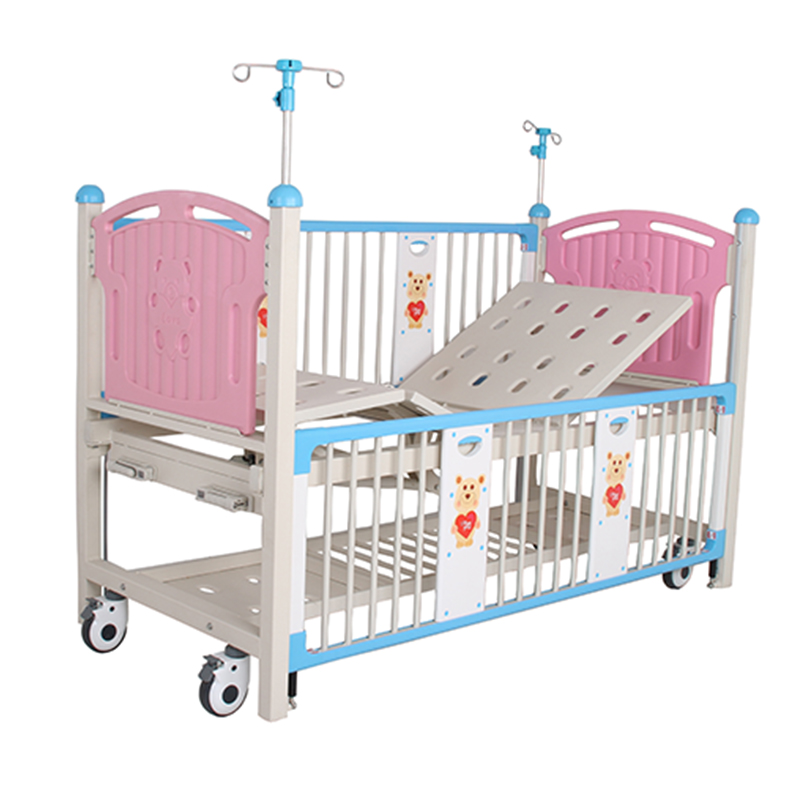
adjustable hospital bed for children
The Child Hospital Bed is designed with smaller dimensions and stylish features for children. It allows two cranks to adjust the back and knee positions. The bed dimensions are Length 46.1 inches, Width 35.4 inches, and Height 25 inches, with high-height side rails, head, and footboards to prevent rolling out of the bed.
- Suitable for: Children, pediatric patients
E. Examination Bed
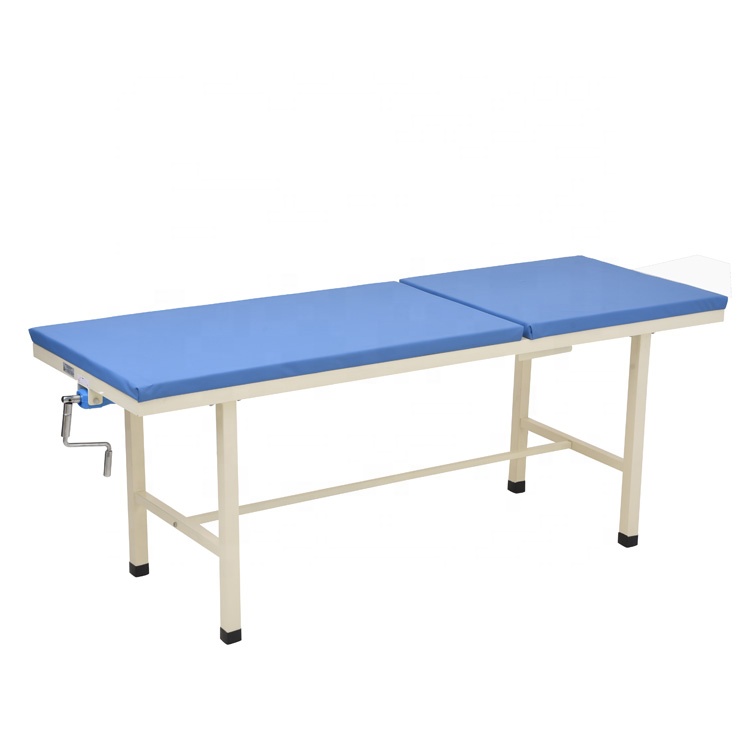
The Examination Bed provides a platform for hospitals and healthcare centers for patient daily regular examinations. The height is fixed, and the surface dimensions are the same as the adult standard.
- Dimensions: Height approximately 19.7 inches, Length 78.7 inches, Width approximately 38.6 inches
- Suitable for: Adults, children, examination purposes
F. Delivery Bed
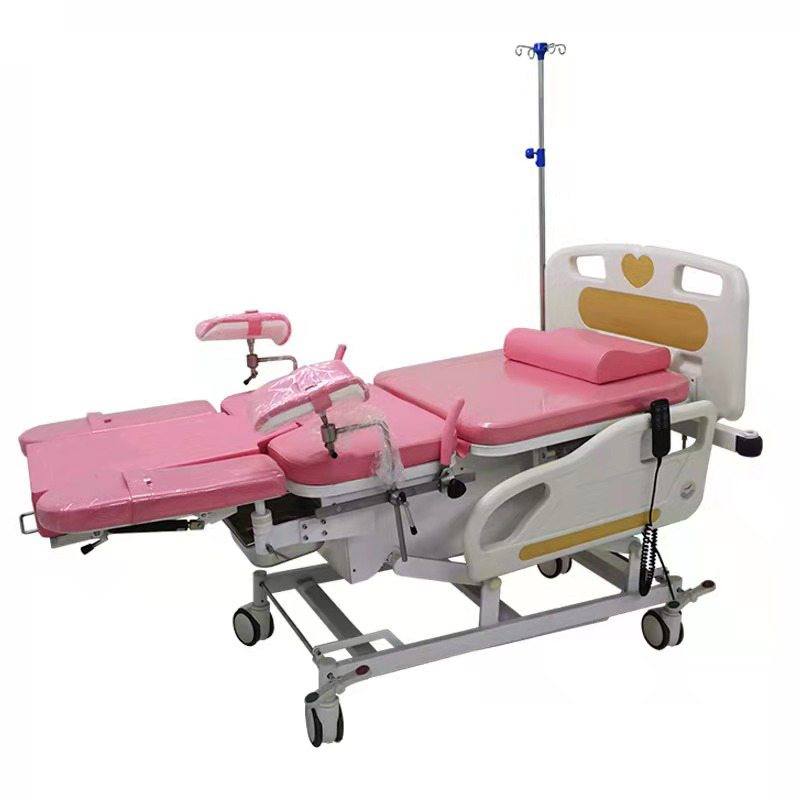
The Electric Delivery Bed provides extensive adjustments in height, backrest, Trendelenburg and reverse Trendelenburg, leg section, and upward. It offers a comfortable platform for women giving birth, while the doctor can adjust the bed to a suitable position using a wired hand-controller.
- Dimensions: Height 24 to 35 inches, Length 84.6 inches, Width approximately 38.6 inches
- Suitable for: Women in labor, delivery purposes
G. Stretcher Bed
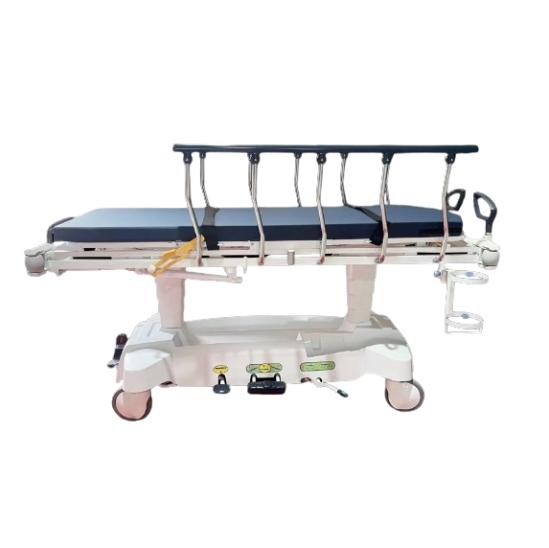
The Hydraulic Stretcher Bed is designed for emergency use. It provides advanced features such as height up and down, Trendelenburg and reverse Trendelenburg positions via the hydraulic foot pad, and two directional pads. The premium X-ray Cassette board on the backboard option is available.
- Dimensions: Height 24 to 35 inches, Length 84.6 inches, Width approximately 38.6 inches
- Suitable for: Adults, children, emergency transport
H. Pediatric Crib
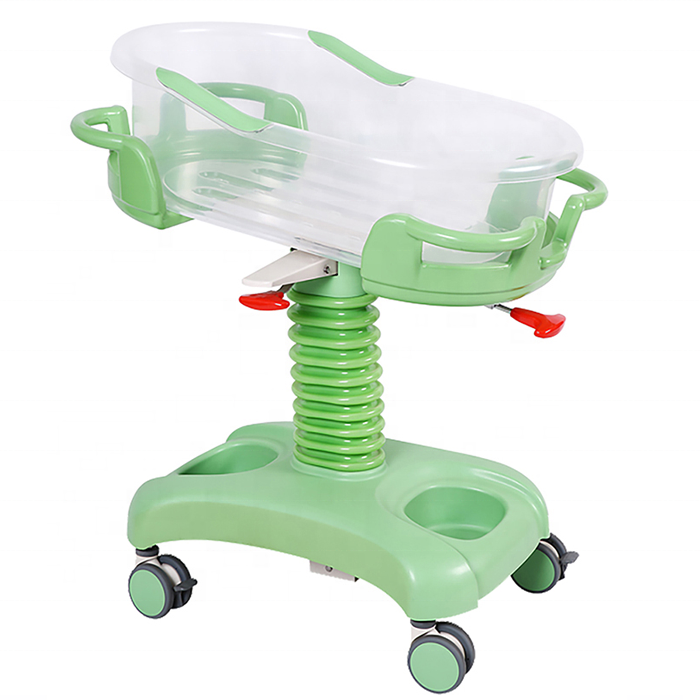
The Newborn Crib has advanced features such as Trendelenburg and reverse Trendelenburg, height up and down, and lockable castors. It is compact in dimension for pediatric babies.
- Dimensions: Height 30 to 38.5 inches, Length 31.5 inches, Width approximately 19.7 inches
- Suitable for: Infants, newborns
Classification and Size Data:
| Bed Type & Name | Dimensions |
|---|---|
| A, Electric ICU Bed | Height: 18 to 30 inches (450 to 760 mm), Length: 84.6 inches (2150 mm), Width: 38.6 inches (980 mm) |
| B, Standard Height Hospital Bed | Height: 19.7 inches (500 mm), Length: 84.6 inches (2150 mm), Width: 38.6 inches (980 mm) |
| C, Adjustable Height Hospital Bed | Height: Adjustable (commonly 18 to 30 inches, 450 to 760 mm), Length: 84.6 inches (2150 mm), Width: 38.6 inches (980 mm) |
| D, Child Hospital Bed | Length: 46.1 inches (1170 mm), Width: 35.4 inches (900 mm), Height: 25 inches (635 mm) |
| E, Examination Bed | Height: 19.7 inches (500 mm), Length: 78.7 inches (2000 mm), Width: 38.6 inches (980 mm) |
| F, Delivery Bed | Height: 24 to 35 inches (600 to 900 mm), Length: 84.6 inches (2150 mm), Width: 38.6 inches (980 mm) |
| G, Stretcher Bed | Height: 24 to 35 inches (600 to 900 mm), Length: 84.6 inches (2150 mm), Width: 38.6 inches (980 mm) |
| H, Pediatric Crib | Height: 30 to 38.5 inches (760 to 1000 mm), Length: 31.5 inches (800 mm), Width: 19.7 inches (500 mm) |
III. Custom Dimension Options
A. Importance of Custom Dimensions for Patient Comfort and Safety
Custom dimension options are crucial for ensuring patient comfort and safety. Standard beds may not always meet the specific needs of patients, leading to discomfort and potential safety risks. Custom dimensions can help address these issues by providing beds that fit the patient’s size and specific requirements.
B. Factors to Consider When Choosing Custom Dimensions for Hospital Projects/Tender
When choosing custom dimensions for hospital projects or tenders, several factors should be considered:
- Patient Size and Weight: Custom dimensions should accommodate the patient’s size and weight to ensure comfort and safety.
- Hospital Layout: The dimensions should fit within the hospital’s layout, considering space constraints and accessibility.
- Patient Mobility: Custom dimensions should consider the patient’s mobility, ensuring that the bed can be easily accessed and used by patients with limited mobility.
- Caregiver Comfort: The dimensions should also consider the comfort and ease of use for caregivers, ensuring that they can safely and comfortably care for patients.
C. How Manufacturers Can Help with Custom Dimension Options
Manufacturers play a crucial role in providing custom dimension options for hospital beds. They can work with hospital professionals, bed tenders, and distributors to understand the specific needs of patients and create beds that meet those needs. Manufacturers can offer:
- Custom Sizes: Manufacturers can create beds in custom sizes to accommodate patients of different heights and weights.
- Custom Features: Manufacturers can add or modify features to meet the specific needs of patients, such as adding side rails, adjusting the height of the bed, or adding specialized mattresses.
- Technical Support: Manufacturers can provide technical support to help with the installation and maintenance of custom beds.
IV. Choosing the Right Hospital Bed
Choosing the right hospital bed depends on several factors, including the patient’s age, medical condition, and specific needs. Here are some considerations for choosing the right hospital bed:
A. Adult Hospital Beds
For adults, the choice of hospital bed depends on the patient’s medical condition and specific needs. Electric ICU beds are suitable for critically ill patients, while standard height and adjustable height beds are suitable for general hospital use. Delivery beds are specifically designed for women in labor, providing extensive adjustments to ensure comfort during childbirth.
B. Children’s Hospital Beds
Children’s hospital beds are designed with smaller dimensions and stylish features to cater to the needs of pediatric patients. The choice of bed depends on the child’s age, size, and medical condition. Child hospital beds are suitable for children of various ages, while pediatric cribs are designed for newborns and infants.
C. Infant Hospital Beds
Infant hospital beds, or pediatric cribs, are designed with advanced features to cater to the needs of newborns and infants. The choice of bed depends on the infant’s size, weight, and specific needs. Pediatric cribs are compact in dimension and provide features such as Trendelenburg and reverse Trendelenburg positions, height adjustments, and lockable castors to ensure the safety and comfort of infants.
Conclusion
Choosing the right hospital bed is crucial for ensuring patient comfort and safety. This blog post has explored the different types and sizes of hospital beds, providing valuable insights for hospital professionals, bed tenders, manufacturers, and distributors. By understanding the specific needs of patients and choosing the right hospital bed, healthcare facilities can create a safe and comfortable environment for patients.
Custom dimension options play a crucial role in meeting the specific needs of patients. Manufacturers can help with custom dimension options, ensuring that hospital beds meet the unique requirements of patients. By considering factors such as patient size, weight, mobility, and caregiver comfort, healthcare facilities can make informed decisions when choosing hospital beds for their patients.
Investing in the right hospital beds is essential for providing high-quality patient care. By choosing the right bed for each patient, healthcare facilities can enhance patient comfort, safety, and overall satisfaction.

